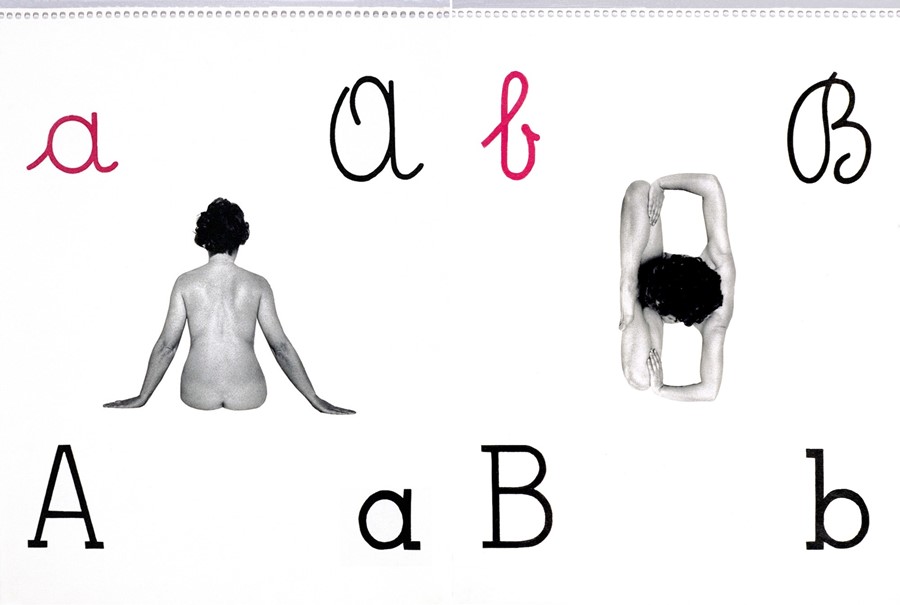This art gallery, tucked away in a 19th-century palazzo, is one of the city's best-kept secrets
There are many things you think of when you think of Naples – pizza (of course), the city’s glorious bay, its many balconies adorned with drying washing, the dormant Mount Vesuvius that looms overhead and which devastated the nearby ancient Roman city of Pompeii – but you rarely think of modern art. This, however, is a grave mistake for any contemporary art lovers planning a trip to the city, as it houses one of Italy’s best modern art galleries: the MADRE (museo d’arte contemporanea Donnaregina). And it’s ridiculously easy to get to, situated as it is right in the heart of the historic centre, just minutes from the Duomo, the Museo Archeologico Nazionale and the Accademia di Belle Arte. Spanning three floors of a 19th-century palace, the Madre’s permanent collection offers an enthralling journey through recent Italian art history, spanning Arte Povera and Transavanguardia, alongside work from international icons such as Franz West, Anish Kapoor, Marina Abramović, Francesco Clemente and more. Add to the equation a selection of insightful exhibitions that deftly interweave Naple’s ancient past and art’s present, glorious site-specific installations and a view to die for, and we defy you to find a nicer way to spend a day.
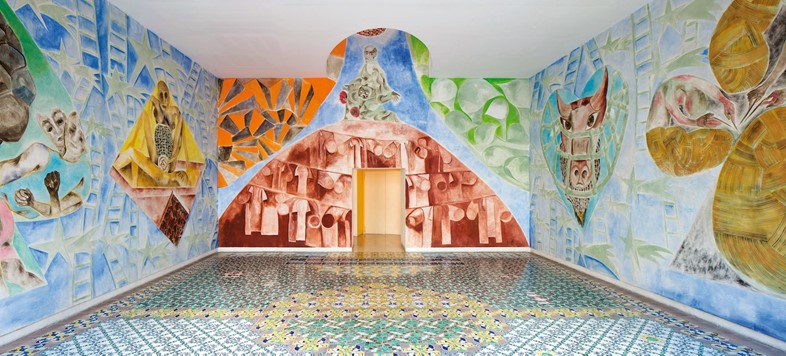
1. The pitch-perfect merging of old and new
The museum makes a compelling and coherent effort to connect the city’s history with the modern and contemporary art that adorns it, neatly evidenced by two striking installations by Greek-Italian artist Jannis Kounellis that sit on the stairwell connecting the Madre’s second and third floors. One is a vast pillar, created from metal caging and filled with plaster-cast limbs and busts of ancient sculptures, while opposite, a thin cast iron column bears a thick paper manuscript which folds over its top like a capital – a nod to the great writers and philosophers the region has spawned. Many of its exhibitions also serve to galvanise the links between past and present. The current show Pompei@Madre, for instance, showcases modern artworks, such as Anish Kapoor’s gaping chasm, Dark Brother (2005), alongside specially chosen, rarely seen archaeological objects from Pompeii that match their modern counterparts in theme or realisation to surprisingly moving effect.
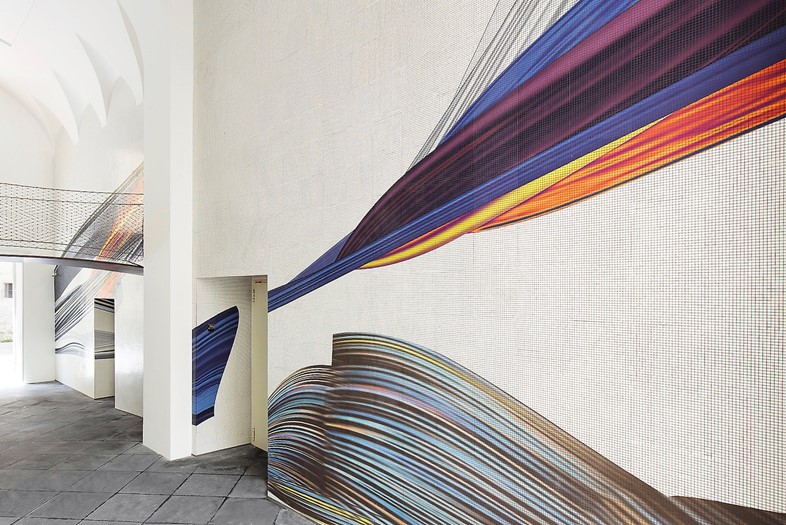
2. The mesmerising new mural by Paul Thorel
Another example of this merging of old and new is the museum’s recent collaboration with French-Italian artist Paul Thorel, who has created a spellbinding site-specific mosaic, which covers all four walls of the passageway linking the Madre’s main courtyard to its dedicated sculpture quadrangle. Thorel is renowned for his early employment of digital technologies to push at the boundaries of photography; since the early 80s he has been fascinated by the ways in which digitised images can be broken down into lines, shadows and indistinct shapes, and the new, singular landscapes these conjure.
His mural, titled Passaggio della Vittoria continues this investigation, while marking the artist’s first foray into mosaic – an homage to the southern Italian tradition, which harks back to the Greco-Roman age, and specifically the white tiled vaults of the city’s famous Galleria della Vittoria, a 609-metre tunnel connecting Naples’ east and west. He was aided in his quest by pioneering Italian ceramics brand, Mutina, who used an innovative double-inking digital print with gloss finish to achieve the tiles’ intricate patterning. The result is a swirling set of horizontal shapes, segments and parabolas, with a distinctly technological, pixellated feel, that guide you through the passage in a swathe of hypnotic colour, set against a glistening white backdrop. A stirringly contemporary take on an ancient medium that makes for thoroughly enjoyable viewing.
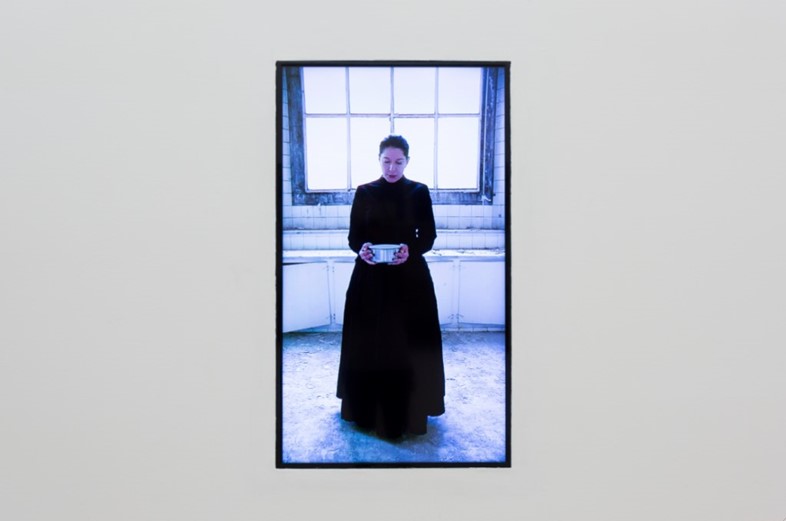
3. Wonderful works by women artists
In a world in which women are still fighting for equal representation in gallery spaces, the Madre’s collections provide a refreshing opportunity to discover key pieces by female artists, both legendary and lesser-known. Highlights include a pierced and heavily tattooed Cindy Sherman in an arresting untitled self-portrait from 1994; an atmospheric still from Marina Abramović’s THE KITCHEN V Carrying Milk (2009), where the artist visited the kitchen of a former Spanish monastery and performed a meditative, 12-hour homage to Teresa of Avila (a saint said to have levitated in a kitchen); plus a video installation by German artist Rosemarie Trockel, starring a flock of over a thousand swifts – engaged in a spellbinding dance and captured on film during one of Trockel’s trips to Naples – paired with an animated abstract composition that offers a mesmeric contrast.
But it is Tomaso Binga (the male pseudonym adopted by Italian artist Bianca Menna) that offers up one of the museum’s most arresting series, Alfabetiere Murale (1976) – a reimagining of the alphabet through collage, which sees Binga use her own nude body to imitate each consonant or vowel. The majority of Binga’s multidisciplinary oeuvre centres on language and the societal silencing of women and this series serves as a playful and pertinent introduction for any newcomers to her work.
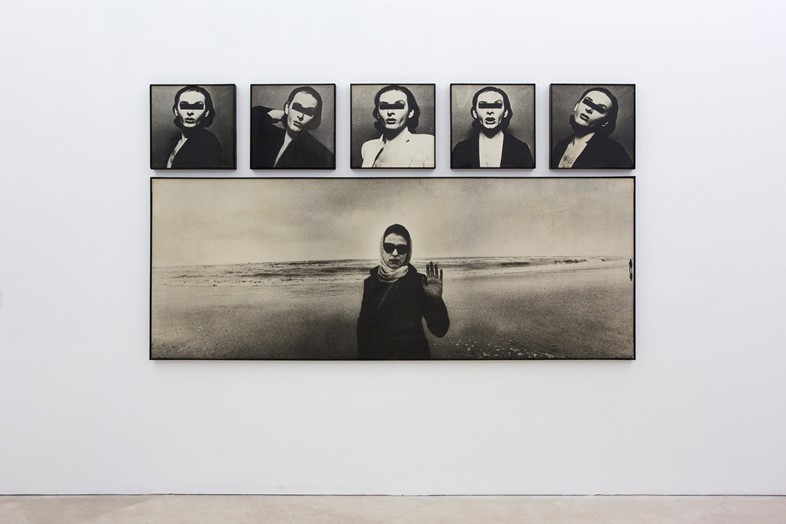
4. Its pioneering portraiture
There are also some brilliant portraits on display courtesy of Anselm Kiefer, Joseph Beuys, and Gilbert and George, among others. Kiefer’s vast work Elisabeth of Austria (1991) is a stirring example of the German artist’s ongoing investigation into the intersection of his country’s mythology with its history, and how this contributed to the rise of Fascism. This particular, ill-fated empress was sister to the last queen of Naples and forms part of a series of portraits of German historical figures, photographed and transferred onto lead with imposing and eerie results. Meanwhile one of the gallery’s best rooms is dedicated entirely to Kiefer’s one-time teacher Joseph Beuys, presenting an array of posters for the Fluxus artist’s first Italian exhibition La rivoluzione siamo noi, held in Naples in 1971, and featuring a full-length snap of a fedora-topped Beuys, shot in the drive of the storied Villa Orlandi in Anacapri. The exhibition was curated by Lucio Amelio, who incidentally coordinated an historic meeting in the city between Beuys and Andy Warhol – and to aptly round off this Neapolitan affair, the room also contains a marvellous monochrome portrait of Beuys lensed by the Pop Art master himself.
Autoritratto in sei pezzi (1975) by the Swiss artist Urs Lüthi, renowned for his androgynously staged self-portraits, also leaps out – featuring a long landscape shot of Lüthi looking uncannily like a young Queen Elizabeth, in sunglasses and a headscarf, topped by five, smaller square close-up portraits, each with the eyes blacked out. A vast self-portrait by Gilbert and George, meanwhile, wearing matching Union Jack suits and scrambling up a graffitied wall (also adorned with British flags) feels somehow like a spooky precursor to the Brexit madness that now engulfs us, and completes the collection of figurative feats.
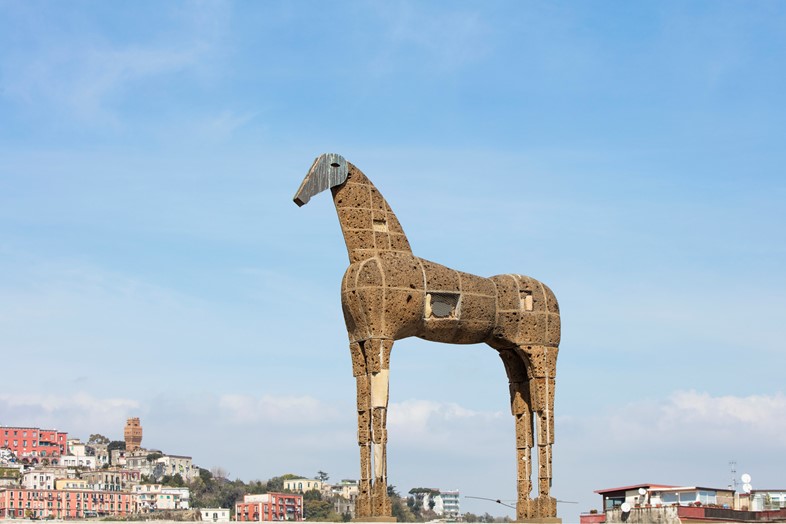
5. The view from the rooftop
Last but by no means least, the Madre allows visitors to clamber up onto its expansive rooftop terrace, where you are met by an elegant, long-legged horse sculpture by Mimmo Paladino, a sign by the artist Bianco-Valente that reads “IL MARE NON BAGNA NAPOLI” (the sea does not bathe Naples) – after Anna Maria Ortese’s 1953 book of the same name, describing the hardships the city endured after the war – and one of the dreamiest views imaginable. From the jagged, cloud-engulfed outline of Mount Vesuvius, to the Museo di Capodimonte, a grand Bourbon palazzo in a sumptuous raspberry hue, to the dome of the Capella di San Gennaro, a chapel said to guard the city’s hope and wealth – you can take in all of Naples’ major landmarks in total tranquility. It also allows you to peer down at the 14th century church of Santa Maria Donnaregina Vecchia, one of the few remaining parts of the old monastic complex from which the Madre got its name, bringing your visit neatly full circle.
With special thanks to the MADRE and the Fondazione Donnaregina per le arti contemporanee, Napoli.
